Samsung G600 review: Slide and snap
Slide and snap
Music player is even better
Armed with 55MB of internal memory and a microSD card slot, the Samsung G600 can be comfortably used as a portable music player. The Music player application allows filtering tracks by artist, album, genre and composer or you can choose to play either the tracks you've recently listened to or the ones that you've played the most. Custom playlists can be created too. You can minimize the application to continue playing in the background. The player does have several equalizer presets plus "wide" and "surround" presets (you cannot create your own, though). You can rate tracks and mark them as favorites. You can subscribe to audio podcasts too. What's even better, there are three new fullscreen animations that run in the background of the player and enhance its looks. The name of the currently playing song scrolls horizontally on the home screen once you minimize the application.
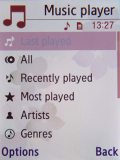
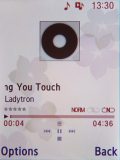
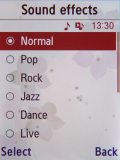

Music library • playing a track • some of the available equalizer presets • the current track on the Home screen
For the first time has Samsung provided a standard audio jack adapter complete with a remote and a microphone. You can listen to music with the retail headset or you can plug your favorite headphones and still enjoy hands-free telephony. You can also use a Bluetooth headset for listening to music - both a mono and a stereo one will do the job, as Samsung G600 supports the Bluetooth A2DP profile. You can even listen music on two Bluetooth headsets simultaneously.
| The Samsung G600 radio can also play in the background, much like the music player. The most unique thing about the FM radio application is that you can actually record programs with it - we've never seen a feature like this in a feature phone. | <#AdRectangle#> |
Unfortunately, we couldn't test the audio quality of the Samsung G600, as we got our handset without the 3.5 mm audio adapter. By the way, the connectivity port used this time is not the regular Samsung one we all know from previous models. It's a new one, which is also used in the Samsung G800.
The Samsung G600 comes complete with an FM radio, which is a welcome feature. You can store up to 30 radio stations. There is no RDS but you can set user-defined names to the stations just so you know which one to choose next time. The radio can also play in the background, much like the music player. The most unique thing about the radio is that you can actually record programs with it - we've never seen a feature like this in a feature phone.
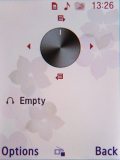
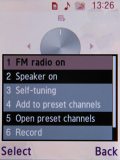
FM radio playing • radio options
Both the Music player and the FM radio have similar interfaces; the same holds true for the video player interface, too. It doesn't have many features but it can play video files in fullscreen landscape mode and you can fast-forward and rewind videos.


Video player regular interface • watching a video in landscape mode
5 megapixels score a mark
Samsung G600 features a promising 5 megapixel camera with a LED flash, which can take pictures at a maximum resolution of 2560 x 1920 pixels. Armed with auto focus, it's supposed to do well enough on both close and distant subjects. As we already pointed out earlier, the Samsung D900 cameraphone was good enough to earn a recommendation as the best 3 megapixel slider a year ago. Samsung cameraphones have been evolving ever since - in terms of picture quality we haven't seen earthshaking progress. However the improvements in speed and user interface are evident. The Samsung G600 is the latest and most advanced of all Samsung cameraphones available in terms of speed, user interface and megapixel count. The shutter key is a two-step one, much like on a digital camera. A halfway press focuses and locks the exposure, while the full press actually takes the picture. This half-shutter mode has been available in Sony Ericsson Cyber-shot handsets for quite some time now, but it first appeared in a Samsung phone with the E590, which was not really long ago.
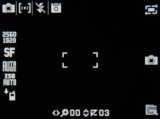

Still camera interface: shooting with the camera is done in landscape position
The camera interface is intuitive and follows the current trend of presenting settings on a toolbar in the bottom of the screen while options appear as popup menus. The settings are extensive and include picture size, shooting mode (single shot, multi-shot, mosaic, panorama), effects (black and white, sepia, negative, emboss), white balance, ISO (up to ISO 800), and viewfinder mode (regular, with indicator icons on and with guidelines).
Among all those, an interesting feature is the Mosaic shot seen on previous Samsung handsets too, which allows you to make photo collages - however those turn out in rather low resolution. The multi-shot mode allows you to take several shots in rapid succession with only one press of the shutter. The Samsung G600 can take up to 9 shots in a row at high quality compression and up to 15 shots at normal quality compression. The gridlines that appear in the viewfinder (turning them on is optional) are there to help you frame your shots like a pro, adhering to the photographic rule-of-thirds. Using it to align your subjects and place points of interest on or near the lines and their intersecting points makes your photos more professional and aesthetic. The rule-of-thirds also applies to landscape shots. For example, the sky should take either one third or two thirds of the frame, instead of placing the horizon in the center.
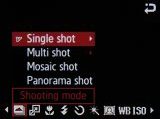

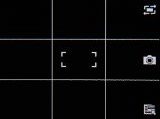
Choosing: shooting mode, ISO, and having a look-see at the viewfinder with the gridlines
Image quality has several different variables such as resolution (meaning image detail, not megapixel count), color accuracy, noise, and noise suppression techniques. There are also other things to watch for - highlight/shadow detail (which is the dynamic range), contrast, sharpness and sharpening processing, and chromatic aberrations.




Sample G600 camera photos: purple fringing is noticeable on some of the photos
In general the image quality of the photos produced by Samsung G600 is on an average level. The photos don't have really that much of detail; however we found medium noise levels and no traces of noise suppression processing. The auto focusing is generally reliable so it should get the job done. In terms of dynamic range we consider the G600 on par with Sony Ericsson K850 for example, and while the picture contrast is good, on some photos we experienced purple fringing. Possibly the greatests flaws we found with the Samsung G600 camera are the relatively slow shot-to-shot time and the processing it does on the captured images. The mobile oversharpens the images and it leaves some artifacts along the edges of sharpened subjects.




Sample G600 camera photos: the dynamic range of the camera is ok for a mobile phone




Sample G600 camera photos: not much noise, but the details are not all there, while there are heavy traces of oversharpening along all edges
The Samsung G600 Mode setup page is where you switch between camera and camcorder, where you turn on the Scene mode and where you will find the "back-office settings" as we like to call them. They include stuff like picture quality (normal, fine, superfine), scene modes (auto, party/indoor, beach/snow, sunset, and dusk/dawn), exposure metering (matrix, center-weighted and spot), shutter sound (can be set to off), zoom sound, brightness sound, auto focus beeps, default storage memory and default naming for photos. As you can see, there are wide-ranging settings, as one might expect in a sophisticated cameraphone. There is even a macro mode, but our test showed there's not much need for it, as the auto focus handles most close-up shots just fine without turning the macro mode on. The most awkward thing about the camera is that to turn the scene mode on, you have to go to the "back-office" settings, select "scenes" and only after that do they appear on the regular settings toolbar.

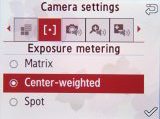

The Mode page: switching to scenes is awkward • adjusting the "back-office" settings
The Samsung G600 camera is also able to shoot video - in the so-called Camcorder mode. There is an upgrade in the video recording department, as all recent Samsung handsets reached only CIF video resolution (352 x 288 pixels) at 15 fps. With Samsung G600 you now have VGA resolution (640 x 480 pixels) at your disposal - alas at only 15 fps. Recording length is only limited by the available free memory. The user interface of the camcorder is pretty much the same as the one of the still camera.
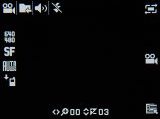
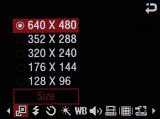
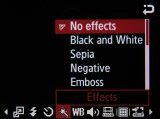
The camcorder viewfinder • changing video resolution and color effects
The videos are captured in MPEG-4 format so they are easily playable on a PC with most video playing software. Having VGA resolution is a real nice thing for a feature phone, but the 15 fps ruined the pleasure for us (Nokia 6233 offered the same combo). Previous Samsung models had the same issue with CIF resolution, they only recorded it at 15 fps, while to get the more enjoyable 30 fps you had to go down to QVGA resolution. At least, now with the Samsung G600 you can record CIF videos at 30 fps with ease. That is not that bad, having in mind that the VideoCD standard uses CIF video resolution too.
Samsung G600 sample video taken at VGA resolution (on a day with heavy showers)
Reader comments
- AnonD-26939
- 28 Nov 2011
- PHu
It should, although mine only came with a measily 1GB card.
- AnonD-26939
- 28 Nov 2011
- PHu
I've had the G600 for about 4 years now and it has served me well. Pros 5MP Camera has a decent resolution (2560X1920) Fairly customizable Nice design Easy to use Flash bright enough to use as a flashlight Battery Life is good; even ...
- Ivan
- 27 May 2009
- N7C
Well, I am yet to get the samsung g600, so far it sounds good, better than the last samsung i had-the e250. I love the dynamic display and the 5MP camera, a great upgade from the e250 but I am yet to compare its camera to the nokia n73 which is my cu...